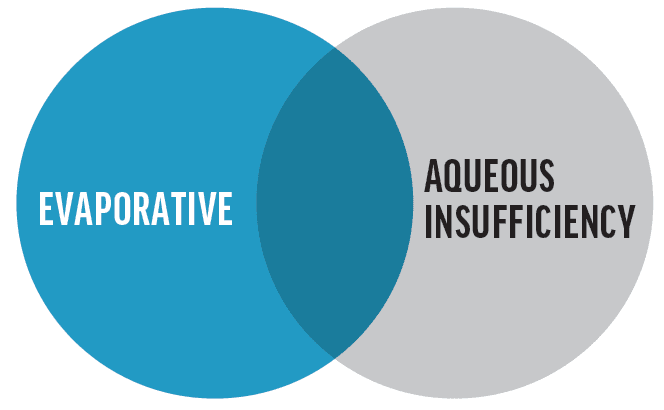
Causes
What Are the Causes of Dry Eyes?
There are two leading causes of dry eyes, and often there is overlap between these two main causes of dry eyes.

Several factors can affect tear production or the condition of the eye in general. Dry eyes can result from many factors, including but not limited to:
Incomplete Blink
When we concentrate on a smartphone, tablet, or detailed task, we do not blink as often as we should. Proper blinking spreads our tears and helps our lids secrete oil from our Meibomian glands.
Age
The amount and quality of tears the eyes produce decrease with age. Dry eyes increase in prevalence for people aged 55 and above.
Gender
Due to hormonal changes, pregnancy, the use of contraceptives, and menopause, women have a higher chance of developing dry eyes.
Cosmetics & Skincare Products
You may find ingredients that are toxic and cause dry eyes in cosmetic and skin care products. Products exist that are hypoallergenic, organic, or vegan.
Eyelid Problems
Conditions such as ectropion (out-turning of the lids) and entropion (in-turning of the lids) can produce more exposure or friction and cause the normal tear film to break up faster.
Recent Surgical Procedures
Refractive eye surgery like LASIK can cause decreased tear production. This is due to a permanent change to the front surface of the eye. For some people, dry eye symptoms related to eye procedures can be temporary. Others can have persistent symptoms.
Medications
Most medicines have side effects, and some of these can affect tear production. Medications such as blood pressure medications, antidepressants, sleeping pills, heartburn tablets, drugs for acne, birth control, hormone replacement, allergies, cold, and Parkinson’s disease can reduce tear production.
Health Conditions
Autoimmune diseases like rheumatoid arthritis, Sjögren’s syndrome, scleroderma, lupus, and thyroid disease can directly affect the glands responsible for tear production. These conditions can cause imbalances in the three main layers of the tear: mucus, oil, and water. Vitamin A deficiency can also decrease tear production.
Indoor and Outdoor Environmental Conditions
Your eyes (and tears) are the most exposed parts of your body. Exposure to a dry environment, whether indoors or outdoors, can affect the eyes. People who live in places with dry climates are more likely to have dry eyes. Exposure to wind, smoke, and fumes can also aggravate your eyes. Dry indoor environments include air-conditioned rooms, hospitals, airplanes, and workplaces.
Daily Activities
Reading, staring at a smartphone or computer, driving, and other similar activities require concentration, leading people to blink less often, which causes increased tear evaporation.
Lifestyle
Contact lenses can also irritate the surface of the eye and contribute to dry eyes. Other activities like cigarette smoking, alcohol consumption, and not getting enough sleep can also affect the dryness of your eyes.
Trust Us with Your Visual Needs
At Concourse Optometry, we are committed to uncovering all of your visual needs and finding the best solutions.
